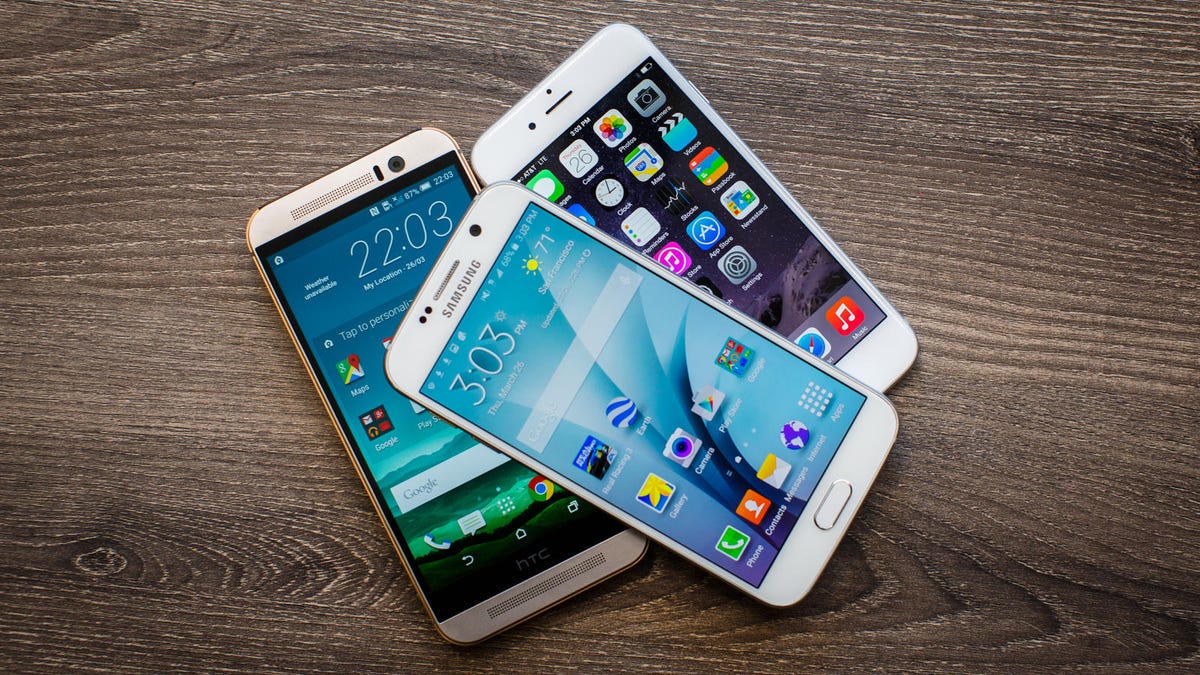
Sarah Tew/CNET
Apple CEO Tim Cook once compared a tablet-laptop combo to mashing up a refrigerator with a toaster. The resulting Frankenstein device would do an equally lousy job of chilling your food and warming it up. That was three years ago.
Today, these tablet-laptop hybrids — which blend the mobility and touchscreen friendliness of a tablet with the capabilities of a PC — are on track to becoming the fastest-growing computing category. Shipments of so-called 2-in-1 devices like Microsoft’s Surface Pro 3 and the Lenovo Yoga 3 Pro, for example, are expected to grow almost fivefold this year. That’s thanks in part to attachable or foldable keyboards and more-powerful hardware, such as Intel’s Core M microprocessors, that let slimmer, tabletlike devices hit speeds on par with midrange laptops.
And tablet sales? The market for large slabs of glass that are used mostly for playing games, reading email and watching videos has begun to slide. Sales of slate-style tablets are expected to fall 8 percent, according to a report from research firm Strategy Analytics. Sales in Apple’s iPad business, meanwhile, fell 18 percent year over year in its most recent quarter, the sixth consecutive quarterly decline.
Consumers can’t seem to get enough of devices that let them have, and do, it all.
“I feel like this took about three years,” said Patrick Moorhead, an analyst at Moor Insights & Strategy. “You now have very high quality 2-in-1s that are very thin, affordable — and people haven’t upgraded their notebook for a while.”
The tablet downturn
Understanding the rise of the 2-in-1 means charting the decline of the standalone tablet.
Jean Philippe Bouchard, a research director at IDC who’s focused on tablets, points to the 2010 Dell Streak, one of the earliest so-called phablets, or phone-tablet hybrids. Consumers and critics panned the Streak for its (then) ridiculously large 5-inch screen. Dell stopped selling it 13 months after release.
“At the time, everyone — me included — were all laughing about this product,” Bouchard said. “When you look now, the 5-inch is the norm for smartphones.”


CNET
Larger phablets, such as Apple’s new iPhone 6 Plus and the devices in Samsung’s Galaxy Note line, have become standard. And mobile software from companies like Microsoft, such as its Word document-editing application, have been tailored to work across devices as business users shift work between screens. Samsung has even managed to re-energize the smartphone stylus as a must-have productivity tool.
These phablets have eaten into the market for standalone 7- and 8-inch tablets, like the 7.9-inch iPad Mini. When your phone is only an inch or two shy, what’s the point, Bouchard points out.
“In the past 9 to 12 months, the impact of phablets on 7-inch tablets was just phenomenal,” he said. “The screen size is so similar.”
Phablets haven’t eroded demand for larger 10-inch tablets, but those larger devices have their own hurdle: getting tablet owners to upgrade to newer versions.
And then there’s the issue of how tablets have traditionally been sold. For starters, they’re expensive. An Apple iPad Air 2, with Wi-Fi and cellular connectivity, but only 16GB of storage, costs $629. Boosting storage to 64GB will set you back $729. People who own tablets are just fine using the same one for four, five or even six years.
“There aren’t enough black-and-white reasons to buy a new one, once you have a tablet,” said Moorhead.
Apple recognizes the issue. “You do see people hold on to their iPad longer than their iPhone. We don’t know what the upgrade cycle will be for people,” Cook told analysts last October, following another year-over-year iPad sales decline.
Cue the 2-in-1s. The devices can fulfill the needs of a tablet owner who wants a more-capable device, while appealing to laptop owners looking to replace an aging machine.
“The 2-in-1 [consumer] is buying at a faster rate than a traditional notebook buyer — 8 to 12 months faster,” said Navin Shenoy, Intel’s corporate vice president and general manager of mobility platforms.
Intel’s data shows that half the customers who didn’t buy a 2-in-1 would have opted for a standalone tablet instead. That split says computer users are moving away from expensive laptops.
“In my opinion, it’s a no-brainer to go with that 2-in-1,” Bouchard said.
Tension for tablets
Now tablet makers risk the same fate.
“We’re just now reaching a point where that install base for tablets is up for refresh, and the jury is still out on whether people will refresh those devices,” Shenoy said. “There is tension.”
Rumors are swirling that Apple this fall will introduce an even larger premium iPad, dubbed the iPad Pro, with a nearly 13-inch screen. That would pit the Pro directly against 2-in-1s and standard laptops.
Apple has already introduced features in its annual software update, called iOS 9, that will let its larger screen devices perform some of the heavy lifting of laptops, like running two apps side-by-side. The new version is scheduled for release sometime next month.


Sarah Tew/CNET
Apple declined to comment for this story. In the company’s latest earnings call, in July, Cook said he was “still bullish on the iPad” and that the device’s “upgrade cycle will eventually occur.”
Tablets won’t simply fall off the face of the Earth, Shenoy points out. At Intel, he said, there are clear markets where tablets will continue to grow — in stores and on the factory floor, for instance.
But the pressure is on tablet makers to figure out what value, if any, tablets will deliver, and whether they can afford to ignore the 2-in-1 market.
“Everyone with a portfolio that includes laptops, tablets and PCs — they’re scratching their heads right now,” Bouchard said. “There is a limited budget for consumers and for enterprise. Companies will have to make bets.”




